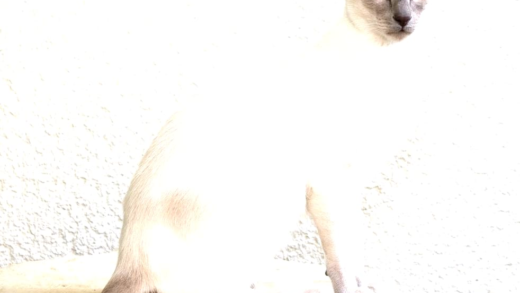Dimetrodon, a prehistoric synapsid often confused with dinosaurs, showcases unique characteristics and plays a significant role in evolutionary history. Its sail-like structure, carnivorous diet, and distinct lineage highlight its importance. Understanding Dimetrodon enhances our grasp of prehistoric life, evolutionary processes, and the biodiversity of ancient ecosystems.
Dimetrodon vs Dinosaurs: What’s the Difference?
Dimetrodon, often mistaken for a dinosaur, actually belongs to a distinct group of reptiles called synapsids. This confusion arises because both Dimetrodon and dinosaurs roamed the Earth long ago and share some physical traits. However, they are fundamentally different in terms of classification and timeline.
- Classification: Dimetrodon is a synapsid, while dinosaurs are archosaurs.
- Time Period: Dimetrodon existed around 295 to 272 million years ago, during the Permian period, whereas dinosaurs appeared much later, during the Triassic period, about 230 million years ago.
- Physical Traits: Dimetrodon is known for its distinctive sail-like structure on its back, which is absent in dinosaurs.
This distinction is crucial for understanding the evolutionary history of reptiles. Recognizing the differences helps clarify the lineage of modern mammals, which descended from synapsids like Dimetrodon, and separates them from the lineage leading to birds and modern reptiles.
Key Features of Dimetrodon: Appearance and Behavior
Dimetrodon boasts several unique features that set it apart from other prehistoric reptiles. Its most notable characteristic is the large sail on its back, formed by elongated neural spines. This sail might have played a role in thermoregulation or mating displays.
- Size: Dimetrodon could grow up to 10 feet long.
- Diet: It was a carnivore, primarily preying on smaller reptiles and amphibians.
- Locomotion: Dimetrodon had a sprawling gait, similar to modern reptiles, allowing it to navigate its environment effectively.
In terms of behavior, Dimetrodon likely exhibited predatory strategies similar to those of modern carnivores. Its adaptations indicate a highly efficient predator, capable of thriving in the diverse ecosystems of the Permian period.
Dimetrodon’s Evolutionary Journey: Where Does It Fit?
Understanding Dimetrodon’s evolutionary journey is essential for grasping its significance in the history of life on Earth. As a synapsid, Dimetrodon represents a crucial step in the evolution of mammals.
- Origins: Dimetrodon evolved from early synapsids, diversifying during the Permian period.
- Relation to Mammals: It shares common ancestors with mammals, making it a key species in the evolutionary tree.
- Extinction: The extinction of Dimetrodon occurred before the rise of dinosaurs, paving the way for archosaurs to dominate the Mesozoic era.
Dimetrodon’s evolutionary history highlights the complexity of life on Earth. Its adaptations and eventual extinction illustrate the dynamic nature of evolution, where different lineages emerge and adapt to changing environments.
The Clade of Dimetrodon: Relatives and Family Tree
Dimetrodon is a fascinating creature that belongs to the clade Synapsida, which is significant in the evolutionary history of vertebrates. Understanding Dimetrodon’s family tree helps clarify its relationship with other prehistoric animals and its position in the grand scheme of life.
- Synapsids: Dimetrodon is part of the synapsids, a group that includes mammals and their ancestors. This clade is characterized by a single temporal fenestra, a hole in the skull behind the eyes.
- Relatives: Some of Dimetrodon’s closest relatives include other synapsids like Edaphosaurus and various pelycosaurs. These creatures share similar features and ecological roles.
- Evolutionary Significance: Dimetrodon and its relatives represent a critical evolutionary step leading to mammals, showcasing adaptations that would later be important for mammalian development.
By examining the evolutionary lineage of Dimetrodon, we gain insights into how synapsids diversified and adapted, paving the way for the rise of mammals. This connection is vital for understanding the development of complex life forms.
Living Environment of Dimetrodon: What Was It Like?
Dimetrodon thrived in a vastly different environment than today’s ecosystems. It inhabited the lush, warm regions of the Permian period, which were characterized by unique geological and climatic conditions.
- Habitat: Dimetrodon lived in moist environments, often near rivers and swamps, filled with diverse flora and fauna.
- Climate: The climate during the Permian was generally warm, with high levels of humidity, providing ideal conditions for a variety of plant life.
- Ecological Role: As a top predator, Dimetrodon played a crucial role in its ecosystem, preying on smaller reptiles and amphibians, thus maintaining the balance of its environment.
This environment not only supported Dimetrodon’s existence but also influenced its evolutionary adaptations. Understanding its habitat helps us appreciate how ancient ecosystems functioned and how species interacted within them.
Impact of Dimetrodon’s Discovery: Changing Our View of Prehistoric Life
The discovery of Dimetrodon has profoundly impacted our understanding of prehistoric life. Initially thought to be a dinosaur, its true classification as a synapsid has reshaped how scientists view the evolutionary history of reptiles and mammals.
- Scientific Insight: Dimetrodon’s discovery highlighted the diversity of prehistoric life, emphasizing that not all large reptiles belong to the dinosaur lineage.
- Evolutionary Understanding: It provided crucial evidence of the evolutionary transition from reptiles to mammals, helping fill gaps in the fossil record.
- Public Perception: The fascination with Dimetrodon has sparked interest in paleontology and the broader study of ancient ecosystems, inspiring generations of researchers and enthusiasts.
In conclusion, the impact of Dimetrodon’s discovery extends beyond scientific circles, influencing how we perceive the history of life on Earth. Its unique characteristics and evolutionary significance continue to captivate those interested in the mysteries of our planet’s past.
Fascinating Facts About Dimetrodon
Dimetrodon is not only notable for its appearance but also for several intriguing facts that make it a captivating subject of study. Here are some surprising details:
- Not a Dinosaur: Despite its dinosaur-like look, Dimetrodon existed long before dinosaurs. It represents a unique lineage that diverged from the ancestors of mammals.
- Sail Function: The sail on its back could have served multiple purposes, including thermoregulation (helping it manage body temperature) and attracting mates.
- Misconceptions: Many people mistakenly believe that all large reptiles from the past are dinosaurs. Understanding Dimetrodon helps clarify these misconceptions.
- Fossil Discovery: The first Dimetrodon fossils were discovered in the early 20th century, and they significantly contributed to our understanding of prehistoric life.
- Popular Culture: Dimetrodon has appeared in various documentaries and films, often portrayed as a fierce predator, showcasing its lasting impact on popular culture.
These facts highlight not only the uniqueness of Dimetrodon but also its importance in the study of prehistoric life.
Why It’s Important to Distinguish Dinosaurs from Other Reptiles
Understanding the distinctions between dinosaurs and other prehistoric reptiles like Dimetrodon is crucial for several reasons:
- Evolutionary Clarity: Differentiating these groups aids in comprehending the evolutionary history of reptiles and mammals. It showcases the diverse paths life has taken.
- Scientific Accuracy: Accurate classification helps scientists communicate effectively about prehistoric creatures and their characteristics.
- Public Understanding: Clear distinctions enhance public interest and understanding of paleontology, fostering a deeper appreciation for ancient ecosystems.
- Conservation Insights: By studying the evolutionary history of these reptiles, we can gain insights into biodiversity and conservation efforts for modern species.
Recognizing the differences between Dimetrodon and dinosaurs enriches our understanding of the natural world and the complex relationships within it.
Dimetrodon’s Unique Place in History
Dimetrodon holds a significant position in the history of prehistoric animals. As a synapsid, it plays a critical role in the evolutionary narrative leading to mammals. Its adaptations and ecological role during the Permian period illustrate the dynamic nature of life on Earth.
- Impact on Mammalian Evolution: Dimetrodon’s lineage is crucial for understanding the development of traits that would later be significant for mammals.
- Understanding Extinction Events: The extinction of Dimetrodon before the rise of dinosaurs provides insights into the factors that affect species survival.
- Influence on Paleontological Studies: Dimetrodon has influenced scientific research, leading to discoveries that have reshaped our knowledge of prehistoric ecosystems.
In summary, Dimetrodon is not just a prehistoric creature; it is a key to understanding the evolution of life on Earth and the intricate connections that define our planet’s history.



Comments are closed.